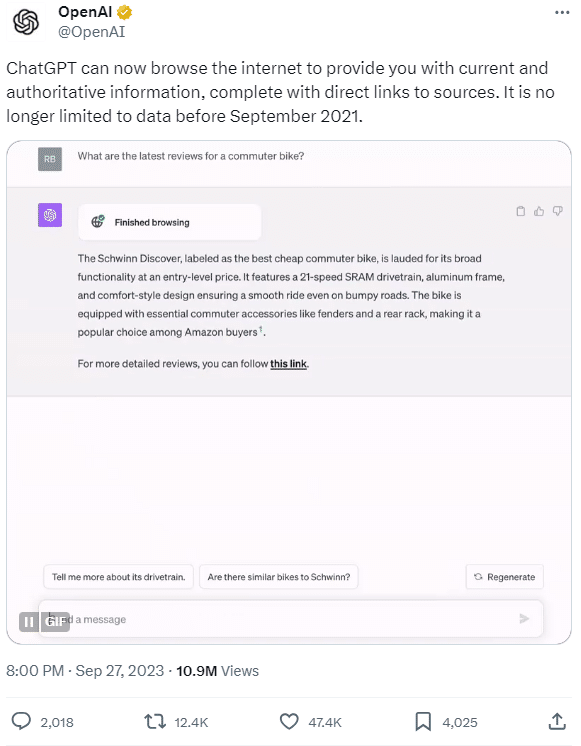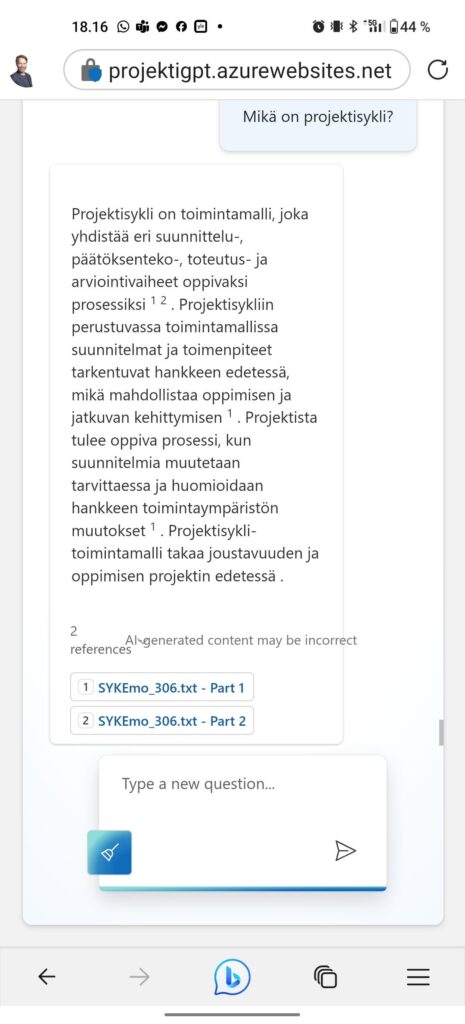The opportunities offered by artificial intelligence have made it an everyday topic and even a significant tool that requires the acquisition of new skills.
Artificial intelligence penetrated the consciousness of the public no later than November 2022, when OpenAI’s generative artificial intelligence ChatGPT was launched.
Generative AI has given us a tool that will change the way we work and learn. As with any technological advancement, it is important to understand its strengths, weaknesses, and potential consequences to take full advantage of its benefits.

Artificial intelligence has been used commercially throughout the 21st century, for example, in the recommendation algorithms of online stores and streaming services, which “learn” the preferences of their users and can offer them new products and services based on those preferences.
In these services, artificial intelligence has worked like an invisible “autopilot”. When using services that utilize machine learning, we have generally not been able to select artificial intelligence features on or off.
According to the CEO of Microsoft, Satya Nadella, we have now reached a stage where artificial intelligence is no longer an “autopilot” or “automatic steering”, but rather a “copilot”, a co-worker who interacts with humans and helps us make choices based on our requests and instructions, produce content, and speed up the completion of various tasks.
So, we can choose when and how we rely on the “co-pilot” and when we can do without it, but for now we will stay in the seat of the driver steering the wheel.
The benefits and possibilities of artificial intelligence
I use the term generative artificial intelligence as a general name for services that use broad language models like the current ChatGPT.
One of the most interesting observations when trying out generative artificial intelligence is the experience of interacting with a computer using natural language. If you compare, for example, the traditional Google search engine and Bing reinforced with artificial intelligence, you will notice the difference.
For years, we have been learning how to give Google search terms and form search phrases that produce the best possible search results. It is essential that the Google search omits the structures that make up grammar and meaning so important in natural language, and that the search is based on keywords only.
On the other hand, Bing, reinforced with artificial intelligence, produces better search results when the search query includes meaning. Just like ChatGPT, you can chat with it too, and precisely by specifying the meaning, the search result will also improve.
The ability of artificial intelligence to process and create natural language lowers the threshold for controlling very complex processes and enables very fast and efficient operations to implement things that previously required the user to have significant expertise and use of time.
For example, GitHub Copilot, an artificial intelligence assistant, helps software developers create, structure, document, and improve code — a real feat for a computer.
Organizations have started to use artificial intelligence in customer service as well, where it can handle a large number of customer contacts, offer ready-made answer suggestions to experts, and thus free up human resources for other tasks.
According to Microsoft’s recent Work Trend Index study, executives are twice as likely to believe that AI will increase work productivity rather than it will destroy human jobs.
Artificial intelligence to support project management
Extensive language models do not learn new things autonomously. Possible ways to improve the already taught broad language model are fine-tuning the language model or refining the answers it gives using, for example, data retrieved from the internet or the organization’s sources. Although refinement is not teaching a language model, the method has enough potential for most practical applications.
OpenAI recently announced on messaging service X (formerly Twitter) that ChatGPT is now real-time, and its content will no longer be limited to the time before September 2021:

The technology and future-oriented The Verge, which reported on the matter, says that ChatGPT’s internet features can be accessed with the “Browse with Bing” feature. The technology used by OpenAI in ChatGPT is therefore based on a feature developed by Microsoft and already available through Bing.
In practice, “real-time” is not based on re-teaching an extensive language model, but on improving answers with the help of information obtained through a more traditional search. One such technology is Retrieval Augmented Generation (RAG), which can also be utilized in artificial intelligence applications built on top of Azure OpenAI using, for example, the company’s operating manual or intranet as a source.
As an example, in the demo we developed, we fed the Finnish Environment Institute’s project management guide to artificial intelligence as background material. We used Azure OpenAI, the GPT-35-turbo-16k language model, and the RAG method.
The conversational artificial intelligence can now look up information from the project manual and tell, for example, what the concepts of project management mean specifically in the organization’s own operating culture, which tasks are mandatory when starting a project, how the project process supports the quality of the development of project activities, and so on.

Weaknesses and limitations of generative artificial intelligence
Artificial intelligence opens new possibilities, but it also has limitations: artificial intelligence can only answer questions based on the information given to it. The amount of content to be taught for broad language models is huge. It would take a person 20,000 years to read it if they spent 8 hours a day on it.
If you have tried generative artificial intelligence, you have noticed that the answers it gives are not necessarily truthful, even if they seem meaningful. Their tendency to produce “hallucinations” is due to their fundamental, technological limitations.
The content produced by generative artificial intelligence is based on the probabilities of string occurrences, i.e., “tokens”. The answer it gives is therefore always not certain, but probably relevant.
It also doesn’t plan or parse the answer in advance but starts to stack occurrences of strings based on the probabilities it has learned, one after the other. This kind of goal-oriented artificial intelligence is under development, and maybe in about five years, the artificial intelligence will be able to prepare planned answers based on some kind of overall picture of the content in advance.
Data security and user privacy protection are also questions that an organization planning to use artificial intelligence should think about before embarking on the development path.
Users of OpenAI’s ChatGPT cannot be sure that the information given in the prompts will not end up in the reach of other users or as educational data, or at least outside the EU/EEA area. Today, it is not even clear whether ChatGPT’s teaching data and language model meet the requirements of the GDPR and the EU data regulation.
Simplifying a bit, it can be said that for production use of artificial intelligence services processing personal and business data should be used only in such cloud services:
- where the geographical location of the processing of the organization’s data can be affected,
- which do not use user data to teach language models,
- and whose operations are transparent enough to ensure that the service complies with regulations.
For example, when using the services of Microsoft’s Azure OpenAI, it is possible to make sure where the data is located and how it is used. Microsoft has told the public that it does not use the data produced by its customers to teach language models.
Using artificial intelligence in business
The strengths and weaknesses of generative artificial intelligence are diverse and extensive. In my opinion, its limitations emphasize the irreplaceable role of a person with an understanding of things as a designer, a limit setter, and a guarantor of the correctness of the information and its quality.
After reading my text for so long, you can now ask your favorite AI for advice, and ask it to suggest a five-step program for utilizing AI. The five-step plan drawn up by artificial intelligence probably seems great at first glance, but upon closer inspection, it might not offer anything very useful after all. Therefore, here I give my proposal for a five-step program for utilizing generative artificial intelligence in business:
- Seize the opportunity and be ready to learn something new.
- Form an understanding of the nature and quality of information in your operating environment.
- Master the skills to control conversational AI using natural language.
- Plan the division of labor between a human and an artificial intelligence assistant.
- Define the quality control processes and information quality criteria for the content produced by the artificial intelligence assistant.
Generative artificial intelligence marks the beginning of a new era in human-technology interaction. It is now important that organizations recognize this challenge, make the necessary strategic choices, and start developing information management processes to harness the potential of artificial intelligence safely, transparently, and efficiently.
Henry Scheinin
Leading consultant, Partner








